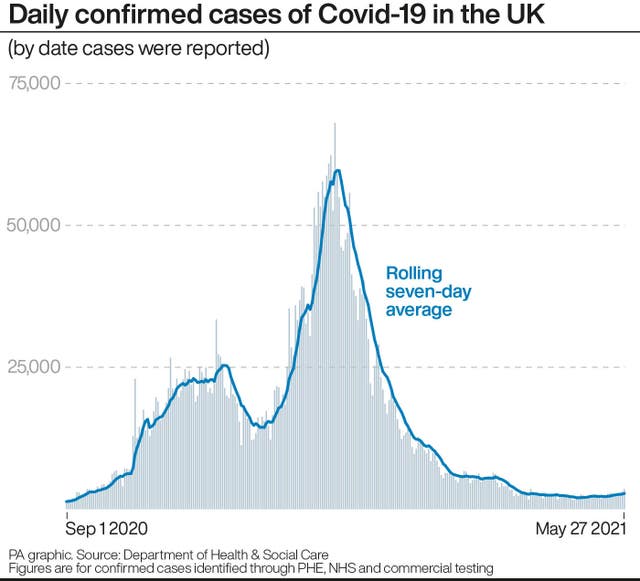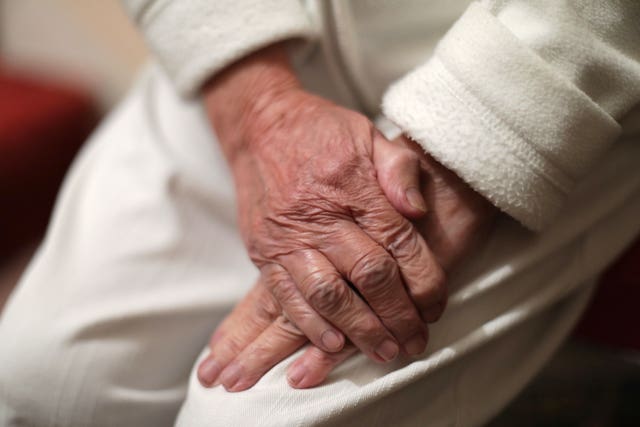There were not enough tests available for care homes, Matt Hancock says
There have been 36,275 deaths involving Covid-19 in UK care homes since the pandemic began.

There was such a lack of Covid-19 tests early on in the pandemic that patients had to be discharged from hospitals to care homes untested, Matt Hancock has suggested, as he sought to defend himself against allegations from Dominic Cummings.
The Health Secretary told a Downing Street briefing that it was not possible to test everyone being sent from hospitals into care homes at the start of the pandemic due to the need to build up the infrastructure for testing.
Instead, the Government told care homes to isolate anyone who was known to be Covid-19 positive in their own room, despite some care home leaders having since said that they were not set up for this.
Allowing patients to be discharged to care homes also meant people who were asymptomatic were in a position to spread the virus.
Government documents show there was no requirement to test patients being discharged from hospital into a care home until April 15 2020.
Guidance dated April 2 said people who were Covid-19 positive could be discharged to care homes and recommended they were isolated.
It added that: “Negative tests are not required prior to transfers/admissions into the care home.”
Guidance that was in place until March 13 further stated that community transmission was so low it was “very unlikely that anyone receiving care in a care home or the community will become infected”.
When asked at the Downing Street briefing on Thursday if sending people back to care homes untested was his “biggest regret”, Mr Hancock said: “I have answered this question many, many times, because we didn’t have the testing capacity at the start of the pandemic, it wasn’t possible.
“What I am very proud of is we built that testing capacity, but it took time.”
It was put to Mr Hancock that Manchester and Trafford’s health and social care system started testing all care home residents before discharge in the middle of March 2020, and he was asked why this did not become national policy for another month.

Mr Hancock replied: “Unfortunately we didn’t have the testing capacity to put that policy in place across the whole country.
“It would have been wonderful if we’d started this pandemic with a very large testing capacity. We didn’t. We had to build one.
“Then, once we’d built one, we were able to put that policy in place nationwide.”
Mr Hancock was also asked if he had told the Prime Minister and Mr Cummings that everyone going from hospitals to care homes would be tested.
On Wednesday the former top aide Mr Cummings told MPs the idea that a protective shield was thrown around care homes was “nonsense”.
He also said the Prime Minister was furious to discover that untested patients had been discharged to care homes, adding that Mr Hancock had told them both people being discharged would be tested.
Mr Hancock told the press briefing: “My recollection of events is that I committed to delivering that testing for people going from hospital into care comes when we could do it.
“I then went away and built the testing capacity for all sorts of reasons and all sorts of uses, including this one, and then delivered on the commitment that I made.”
Mr Hancock said the country “started with a capacity of less than 2,000 (tests) in March last year and got to 100,000 tests a day”.
Dr Jenny Harries, chief executive of UK Health Security Agency, suggested that outbreaks in care homes could be more to do with staff spreading the virus than hospital discharges.
She said: “Although the data is quite hard to interpret it was clear that there are different ways for the virus to come into care homes and it can come from a hospital discharge, but that’s definitely not the majority route of entry.
“It’s coming as community cases rise and care workers are going in and out as they do, because we need them to provide care, it’s coming in with community rates.”

A Public Health England (PHE) report, commissioned by the Department of Health and scientific advisers and called Hospital-associated seeding of care home Covid-19 outbreaks, has concluded that the evidence suggests “hospital associated seeding accounted for a small proportion of all care home outbreaks”.
It used hospital records to identify care home residents who may have acquired their Covid-19 infection whilst in hospital and looked at subsequent outbreaks in care homes from January 30 to October 12 last year.
Over the period, there were 43,398 care home residents who tested positive for Covid and, of these, 35,760 (82.4%) were involved in an outbreak, equivalent to a total of 5,882 outbreaks.
Some 1.6% (97) of outbreaks were identified as potentially seeded from hospital associated Covid-19 infection, with a total of 806 (1.2%) care home residents with confirmed infection associated with these outbreaks, PHE said.
Most of these outbreaks occurred in March to mid-April before testing was brought in. The study did not look at asymptomatic cases.
Earlier, Boris Johnson said the Government did everything it could to minimise Covid transmission when asked about care homes.
The Prime Minister told reporters: “Of course what happened in care homes was tragic.
“We did everything we could to protect the NHS, to minimise transmission with the knowledge that we had.
“One thing that we did not know at the beginning of the pandemic – don’t forget, we did not know at the beginning of the pandemic quite the way in which the virus could be transmitted asymptomatically and that was one of the reasons that we had some of the problems that we saw in care homes.”
Earlier in the Commons, Mr Hancock did not take the opportunity to apologise to the families of those who died in care homes when asked to by Liberal Democrat Munira Wilson.
Mr Hancock paid tribute to social care staff, adding: “It was of course a difficult challenge, especially at the start when many characteristics of this virus were unknown, and as I’ve answered many times in this House we have published the full details of the approach that we take and we took, and we worked with the care home sector as much as possible to keep people safe and we followed the clinical advice on the appropriate way forward.”

There have been 36,275 deaths involving Covid-19 in care homes since the pandemic began, according to the latest figures from the UK’s statistics agencies.
Last July, England’s chief medical officer Professor Chris Whitty told MPs that ministers and experts failed to recognise that care home residents were at risk from workers moving between homes and some staff not being paid sick leave, which meant they came into work while ill, he said.





